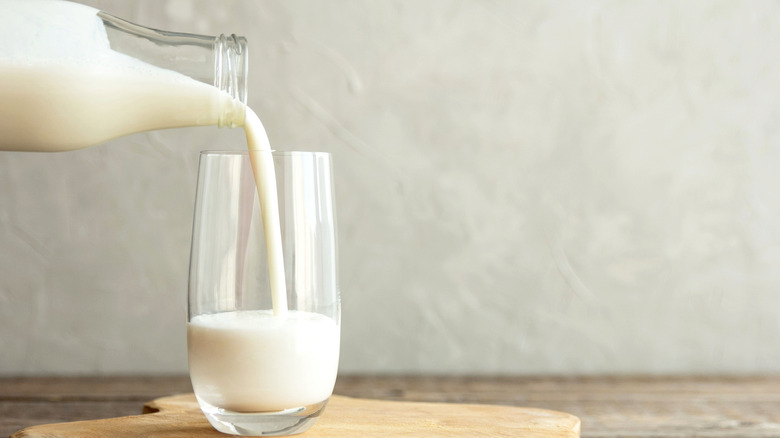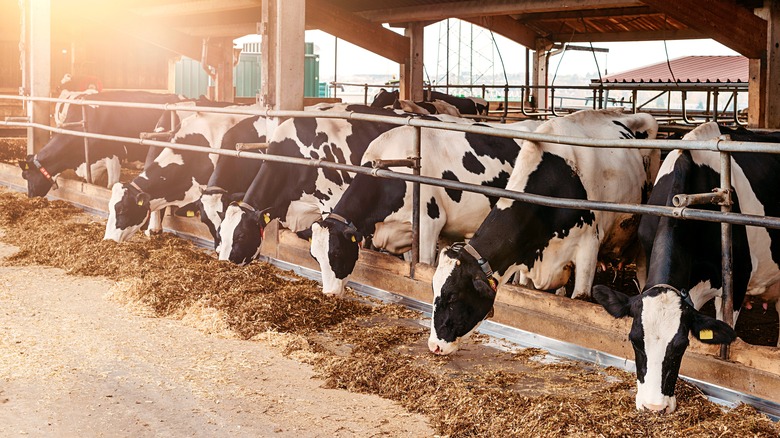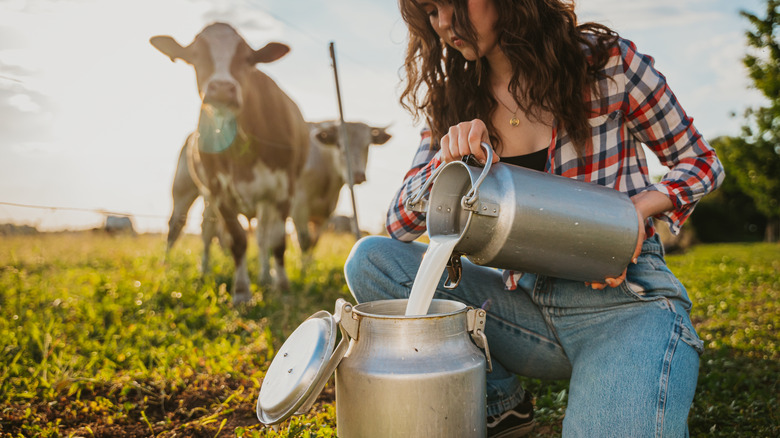Is Raw Milk Safe To Drink?
Raw milk, aka unpasteurized milk, has been the subject of a niche following in the U.S. for decades. Proponents bill it as a supercharged, nutritious health food that cures asthma, allergies, and lactose intolerance. However, these raw milk myths are not backed by science and can often be attributed to other causes. (For example, many young children who grow up drinking raw milk do so on or near farms, which is what has been linked to fewer symptoms of asthma and allergies, according to a 2015 study published in Nutrition Today.)
Indeed, rather than being nutritionally beneficial, raw milk can pose a lot of health risks, and it is generally considered by the FDA to be unsafe for human consumption. According to Healthline, raw milk can contain bacteria including Salmonella, Campylobacter, E.coli, Coxiella burnetti, Cryptosporidium, Yersinia enterocolitica, Staph aureus, and Listeria (which can be especially dangerous to pregnant people as it may cause miscarriages). These bacteria can cause food poisoning and other harmful symptoms, especially among the immunocompromised.
Raw milk and tuberculosis
Raw milk creates a higher health risk than pasteurized milk because the pasteurization process widely used throughout the U.S. is designed to kill the many bacteria that milk comes into contact with between the farm and the fridge. Cows are prone to diseases that can be passed along to humans, and their milk can be tainted by proximity to feces, unsanitized farm equipment, and other environmental factors.
There's a reason why we started pasteurizing milk to begin with. In the early 20th century, outbreaks of bovine tuberculosis were responsible for tens of thousands of cases of tuberculosis in humans who had consumed contaminated milk. In 1900, 10% of tuberculosis cases were attributed to raw milk consumption. And in 1938, raw milk accounted for a quarter of all foodborne illnesses in the United States.
Constantly testing herds of cattle for diseases turned out to be complicated and expensive, so many producers turned to pasteurization, invented by Louis Pasteur in 1864. In 1908, Chicago was the first U.S. city to introduce broad-scale milk pasteurization, and many cities followed suit in the subsequent decades. Interstate sales of raw milk were formally banned by the FDA in 1987.
Is raw milk illegal?
According to the Code of Federal Regulations, the sale of raw milk across state lines is strictly prohibited, but internal raw milk sales vary by state. Many mandate that raw milk cannot be sold in grocery stores. In some cases, it can be sold directly to consumers by farms, with a permit. To obtain one, the cows and the milk itself must be rigorously and regularly tested for diseases like tuberculosis, Salmonella, and E. coli. Other states allow raw milk to be sold in stores as long as it is marked with a warning label.
But generally speaking, most of the milk you purchase in the United States from a grocery store will be pasteurized. Raw milk is typically something that you have to seek out by going directly to farms or ordering from specialty co-ops, giving raw milk an aura of moonshine. Raw milk products like cheese also have their own restrictions and requirements, which is why you'll never eat 'real' brie in the U.S. But luckily, you most likely will never taste the difference, and a little bit of pasteurization is probably worth it to avoid ruining your next few meals with a bad stomach bug.



